Day length
The Sun does not shine in the same way everywhere on Earth. Because of the inclination of the axis of the Earth to the Sun, the position of the Sun changes in the course of the year.
During June (Northern summer), the North Pole is turned towards the Sun, and the Sun shines
there for 24 hours a day: it is the polar day. At the same time, the
Sun does not shine at all at the South Pole; the polar night prevails there. In December, the opposite occurs, the
South Pole experiences polar day and the North Pole polar night.
The 21st of June and the
21st of December, we thus have the two solstices with the same duration of night and day around
the world. This also leads to the seasons.
Between both Poles, the daily lengths also change.
You can observe this on the following
picture series for nine sample locations. These pictures are meteogrammes, they show the weather of the coming 6
days and nights: temperature in the highest block, precipitation in second, clouds in third and wind in the fourth
block - for a defined place. The vertical yellow bars in the background show the daily length at this
place.
The following nine meteograms are arranged around the globe - from the North to the South. The places
are always spaced 20 degrees of latitude apart (see Figure 1).

On the left hand-side column, are presented the places. In the mid columns, the meteograms from
July and January are displayed. They show the difference between summer and winter. The right column displays LIVE
meteograms, which show today's day lengths in each place - and these change daily.
Now, it depends on which
season we have. In June and July, as well as in December and January, you will recognise a LIVE polar day or polar
night in the north and in the south. You can also see how the daily length changes from north to south today (right
column) and in the course of the year (mid columns).
Barentsburg (Svalbard)
(78.07°N / 14.23°E)
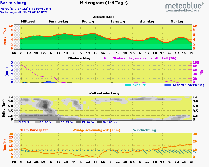
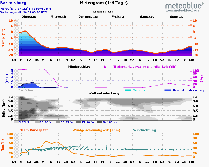
Oslo (Norway)
(59.92°N / 10.75°E)
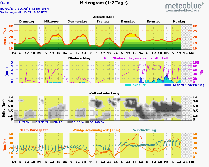
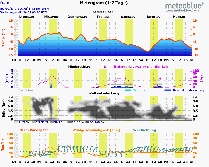
Nuoro (Italy)
(40.32°N / 9.33°E)
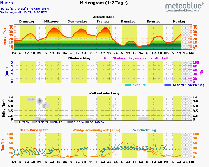
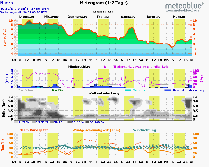
Tamgak (Niger)
(19.04°N / 8.46°E)
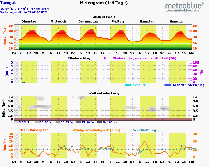
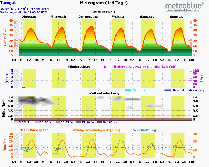
Libreville (Gabon)
(0.38°N / 9.45°E)
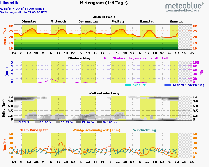
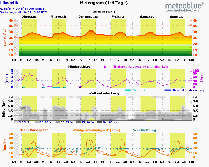
Sesfontein (Namibia)
(-19.13°N / 13.62°E)
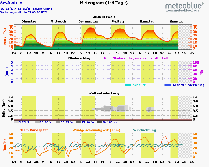

South Atlantic
(-40.00°N / 10.00°E)
(40.00°S / 10.00°E)
South Atlantic
(-60.00°N / 10.00°E)
(60.00°S / 10.00°E)
Antarctica
(-80.00°N / 10.00°E)
(80.00°S / 10.00°E)
How long are the days on the North and South Poles, compared to the Equator?
Are the day lengths different
from those in January and July? If yes, from how much, and why?
Compare temperatures with sunshine hours. Is
there a connection?
Why do temperatures in close proximity of the Equator react more to the sunshine than in
the Poles?
Pay attention to the cloud cover when looking at the temperatures. What happens with temperature
under a closed cloud cover?
Equinox
When the Earth is between the two solstices, the Equinox occurs. There are two equinoxes in a year; the 21st of March and the 23rd of September. During the Equinox, the day length is 12 hours everywhere on Earth, which means that the day and the night have the same duration.



